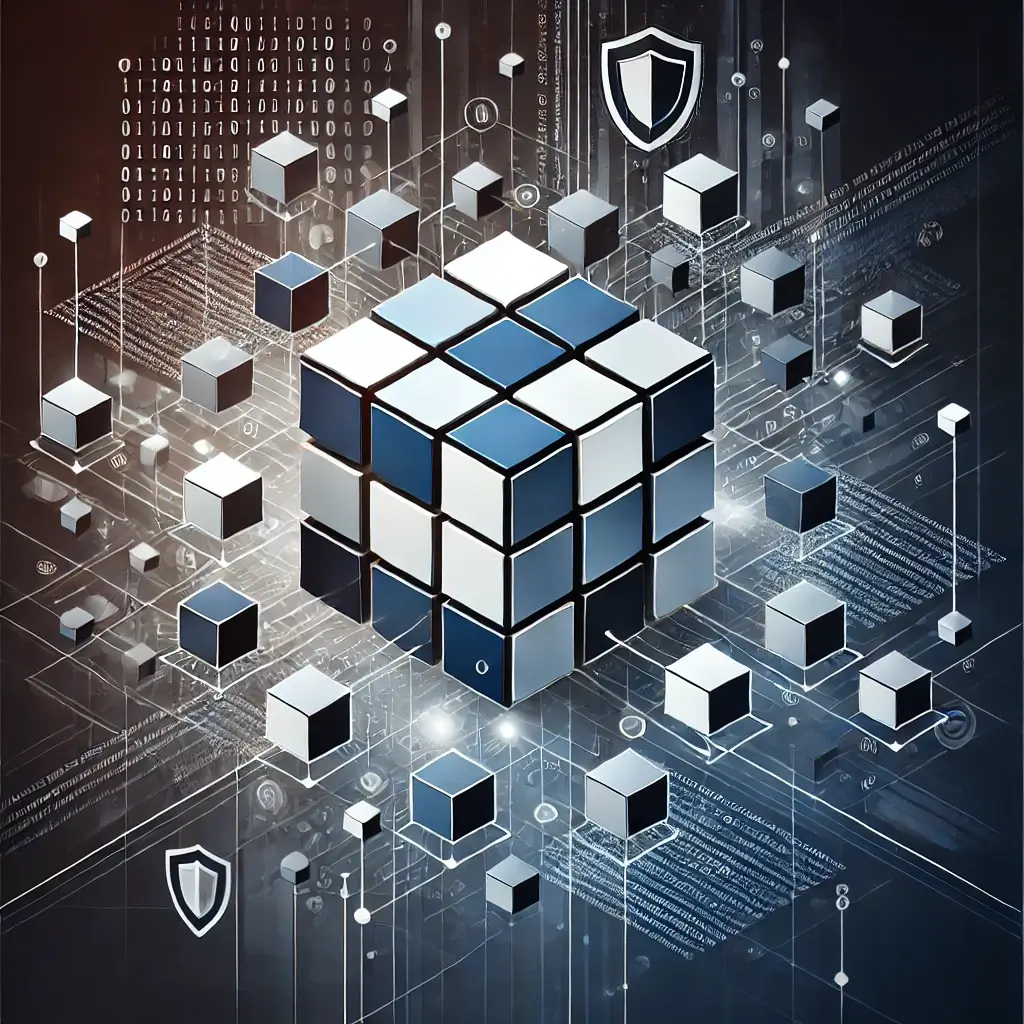In today’s hyper-connected world, organizations and individuals rely heavily on digital systems to operate efficiently. However, the increasing sophistication of cyberattacks, such as ransomware, phishing, and malware, poses a serious threat to these systems. The impact of these attacks can be devastating—interrupting business operations, compromising sensitive data, and causing significant financial and reputational damage. It’s no longer a question of if a cyberattack will occur, but when. This is where cyber resilience comes in.
What is Cyber Resilience?
 Cyber resilience refers to an organization’s capacity to continue delivering critical services and maintain normal operations despite the occurrence of cyber incidents. It focuses on ensuring that systems, processes, and data remain functional and secure, even when an attack or breach has occurred.
Cyber resilience refers to an organization’s capacity to continue delivering critical services and maintain normal operations despite the occurrence of cyber incidents. It focuses on ensuring that systems, processes, and data remain functional and secure, even when an attack or breach has occurred.
Rather than focusing solely on preventing attacks, cyber resilience emphasizes the ability to respond to and recover from incidents. It involves creating flexible systems that can withstand disruptions, quickly restore normal functionality, and ensure minimal impact on operations. Whether it’s a ransomware outbreak, data breach, or infrastructure failure, a resilient organization can adapt, recover, and resume operations with minimal downtime.
In short, cyber resilience provides a broader, more strategic perspective, combining strong cybersecurity measures with robust business continuity and disaster recovery planning. This comprehensive approach ensures that organizations can both defend against attacks and quickly bounce back when disruptions inevitably occur.
ENHANCE YOUR CYBER RESILIENCE TODAY
Core Components of Cyber Resilience
Cyber resilience involves building a robust, adaptable framework that protects against cyber threats and ensures continuity of critical operations. The key components contributing to a comprehensive cyber resiliency strategy include:
Cybersecurity: Protecting Data at Its Core
At the heart of cyber resilience is ensuring the security of data, the most critical asset of any organization. Focusing on data security is essential to prevent unauthorized access, maintain confidentiality, and protect data integrity. Key elements include:
- Data Encryption:Encrypting sensitive data both at rest and in transit ensures that, even if intercepted or accessed, the data remains unreadable and secure.
- Access and Authentication Controls: Using multi-factor authentication (MFA), role-based access control (RBAC), and privileged access management (PAM) to ensure only authorized users have access to critical data and systems.
- Data Immutability: Leveraging technologies like Write-Once, Read-Many (WORM) storage to ensure that once data is written, it cannot be modified or deleted. Immutability is especially valuable in protecting against ransomware or malicious tampering.
- Data Integrity Checks: Implementing integrity checks such as cryptographic hashes ensures that data has not been altered or corrupted during storage or transmission.
- Continuous Monitoring and Auditing: Monitoring real-time data access and behavior patterns to detect anomalies, while regular auditing ensures compliance with security protocols and helps identify potential weaknesses.
By focusing on these key areas, organizations can secure their data and mitigate the risk of breaches or tampering, thus building a strong defensive foundation.
Business Continuity: High Availability and Failover Mechanisms
Business continuity ensures that critical operations can continue even in the face of a cyber incident or system failure. A strong focus on high availability and seamless recovery mechanisms enables organizations to minimize disruptions. The core elements include:
- High Availability: Architecting systems to ensure uninterrupted availability of critical services. This involves designing systems that can automatically recover from failures with minimal downtime.
- Multi-Way Data Replication: Replicating data across multiple, geographically dispersed locations ensures that even if one location fails, others can continue to provide accurate, up-to-date information without service interruption.
- Failover, Resynchronization, and Failback:
- Failover: In the event of a system failure, operations automatically shift to a backup or redundant system, ensuring continuous service.
- Resynchronization: Once the primary system is restored, data and systems are resynchronized to ensure consistency between the backup and the restored system.
- Failback: After resynchronization, operations can be seamlessly returned to the primary system without any loss of data or service quality.
By focusing on these strategies, business continuity ensures that critical operations can continue, and disruptions are minimized even in the face of system failures or attacks.
Incident Response: Rapid Detection and Containment
Despite the best defenses, incidents can and do occur. An effective incident response plan ensures that an organization can swiftly detect, contain, and mitigate the impact of cyber threats. Key components include:
- Threat Detection: Utilizing tools such as Security Information and Event Management (SIEM) platforms, intrusion detection systems (IDS), and behavioral analytics to detect unusual activities in real-time, allowing for early intervention.
- Immediate Containment: Once a threat is detected, rapid containment strategies, such as isolating compromised systems, help prevent the spread of the attack across the network.
- Communication Protocols: Establishing clear communication channels with key internal and external stakeholders ensures timely action. This includes notifying leadership, IT teams, customers, and regulatory bodies as needed.
A well-executed incident response plan helps minimize damage and ensures faster recovery, protecting both operational integrity and customer trust.
Disaster Recovery: Restoring Systems and Data
After the immediate threat has been contained, the focus shifts to restoring systems and data to full functionality. Disaster recovery is critical for minimizing downtime and ensuring that no data is lost or corrupted. The key elements include:
- Data Restoration: Recovering up-to-date backups of critical data from secure, offsite, or cloud-based locations ensures minimal data loss and a quicker return to normal operations.
- System Rebuilding: Repairing or replacing affected systems and applications, ensuring they are free of malware or vulnerabilities before being brought back online.
- Testing and Validation: Conducting thorough testing to ensure that restored systems are functioning correctly and that any vulnerabilities have been addressed.
By combining robust backup and recovery strategies, disaster recovery ensures that organizations can restore operations quickly and effectively after an incident.
Key Threats to Cyber Resilience
Cyber resilience is constantly challenged by a variety of threats, both from malicious actors and internal vulnerabilities. Here are the key threats that organizations must address to ensure ongoing resilience:
Cyberattacks
Cyberattacks are becoming more frequent and sophisticated. The most common types of attacks include:
- Malware: Malicious software like viruses, trojans, and worms that infect and damage systems.
- Phishing: Fraudulent attempts to trick individuals into divulging sensitive information such as login credentials or financial information.
- Ransomware: Attackers encrypt a victim’s data and demand a ransom for its release, threatening significant data loss or system downtime.
- Distributed Denial of Service (DDoS): Overwhelming a website or service with traffic, rendering it unavailable to legitimate users.

Human Error
Not all threats come from malicious sources. Human error can be a significant threat to cyber resiliency. Employees can accidentally compromise security by:
- Falling for phishing scams.
- Misconfiguring systems.
- Using weak passwords or reusing passwords across different platforms. Ensuring employees are trained in cybersecurity best practices is critical to mitigating these risks.
System Failures
Even with robust cybersecurity measures, outdated or poorly maintained systems can become a point of vulnerability. Software vulnerabilities, unpatched systems, or a lack of redundancy in critical systems can all lead to failures that disrupt business operations. Regular system updates and infrastructure audits are key to preventing these failures.
Natural Disasters
While not directly related to cyberattacks, natural disasters like floods, fires, or earthquakes can destroy physical IT infrastructure. Having geographically distributed data backups, cloud-based services, and disaster recovery strategies are essential to ensure resilience in the face of these unforeseen events.
Understanding these threats and planning for them is the first step towards building a resilient organization.
The Cyber Resilience Framework
To build and maintain cyber resiliency, organizations must follow a comprehensive framework that ensures they can detect, respond to, and recover from cyber incidents. The Cyber Resilience Framework is based on five critical stages:

- Preparation: Preparation involves anticipating potential cyber threats and vulnerabilities. Organizations should regularly conduct risk assessments, maintain strong cybersecurity hygiene, and ensure employees are trained to recognize and respond to threats. It also includes developing incident response and disaster recovery plans.
- Detection: Early detection of cyber threats is critical to minimizing their impact. Using tools such as Security Information and Event Management (SIEM) systems, organizations can monitor their networks in real time for suspicious activity, enabling them to act swiftly when a threat is identified.
- Response: When a cyber incident occurs, a swift, coordinated response is essential. The organization should follow its incident response plan, which includes isolating affected systems, notifying relevant stakeholders, and initiating containment measures to limit the attack’s spread.
- Recovery: Once the threat has been neutralized, the focus shifts to recovery. This includes restoring affected systems, recovering lost or compromised data from backups, and resuming normal business operations. A well-designed disaster recovery plan is crucial for minimizing downtime.
- Adaptation: The final stage is adaptation, which involves learning from the incident to improve defenses. After every cyber incident, organizations should conduct a post-incident analysis to identify what went wrong and update their strategies to prevent similar events in the future.
By following this cyclical framework—preparation, detection, response, recovery, and adaptation—organizations can create a robust, cyber resilient system that minimizes the impact of cyber threats and ensures long-term operational stability.
How DataCore Can Help
DataCore helps organizations enhance their cyber resiliency by focusing on two crucial areas: information security and business continuity. By strengthening information security, DataCore ensures that your data remains protected against threats and breaches, enabling you to maintain control over sensitive information in an increasingly complex threat landscape. At the same time, DataCore fortifies business continuity by ensuring that your critical operations can withstand disruptions, allowing you to continue functioning smoothly even in the face of cyber incidents. Together, these two pillars enable you to safeguard your data and ensure uninterrupted operations.
Ready to Enhance Your Cyber Resilience?
